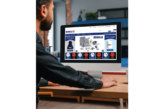
Brands are an essential part of the factoring business – the right brand with direct supply generates turnover and profitability, and provides customer retention and new customers. Jagvir Bains returns to give his opinion on the best way to source new brands to stock.
The first step in identifying new brands is to make yourself aware of key local brands within your area and their selling price. It is essential to be able to differentiate between a brand and a boxed product that is supposedly a brand, so you can compare apples with apples.
The second step, once you have analysed your market, is to list a number of non conflicting alternative brands. One way you can do this is to engage with your most knowledgeable customers to ascertain which brands they have used and their experiences, both positive and negative, as these are the golden nuggets of information that will help determine your choice.
The third step is to compare your existing range of part numbers with your chosen brand and in particular, pay close attention to the part numbers that are missing from your existing list; scrutinize the list to make sure you are not filling up your shelves with part numbers that are obsolete. It is essential to understand the product lifecycle in order to make precise decisions on your inventory, and it is also worthwhile to note that many suppliers have multiple part numbers that fit different applications but are actually the same part number. To get an accurate picture, it is best practice to compare prices including rebates to get an accurate picture. Once you have spotted the anomalies, go back to the supplier to renegotiate. Following this, look at the new-to-range part numbers and when those part numbers will hit the aftermarket. Many suppliers bring new-torange part numbers too early, which consumes your cash flow and space.
Don’t forget about stock cleansing and marketing support, and ensure you have the most up-to-date information to make an informed choice that will not only increase your profit margins, but expand your customer base, too.
How do you know what will sell and what won’t?
When working with brands, you will ascertain that the brands that hold IP rights to certain products will be the most competitive. In comparison, brands that do not hold the IP rights to certain part numbers will have to buy from the IP rights holder and re-box, making the product largely uncompetitive and extremely hard to sell. This is widely seen in the clutch product range and extends into other product groups, including filters. What works really well – if done right – isbringing in a substitute product, which uplifts the sale on a branded product. However, this has to be planned and thought out according to the product group you are working on, and if not done right, it could be a very costly exercise gone wrong. Lastly, don’t forget to check that your brand is not over-distributed and under-priced on online platforms.







